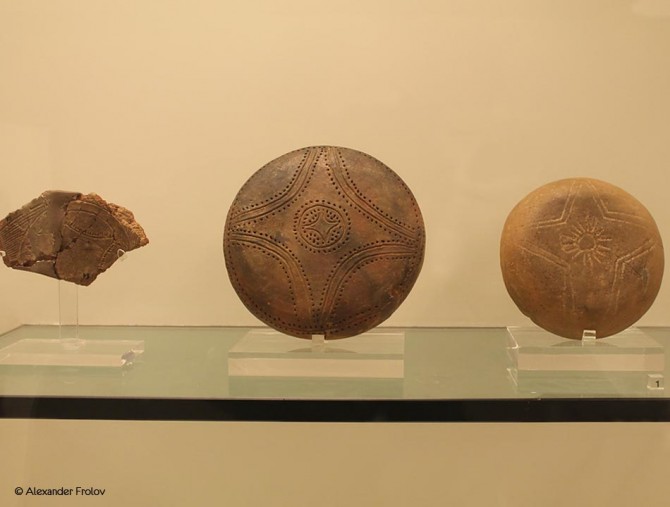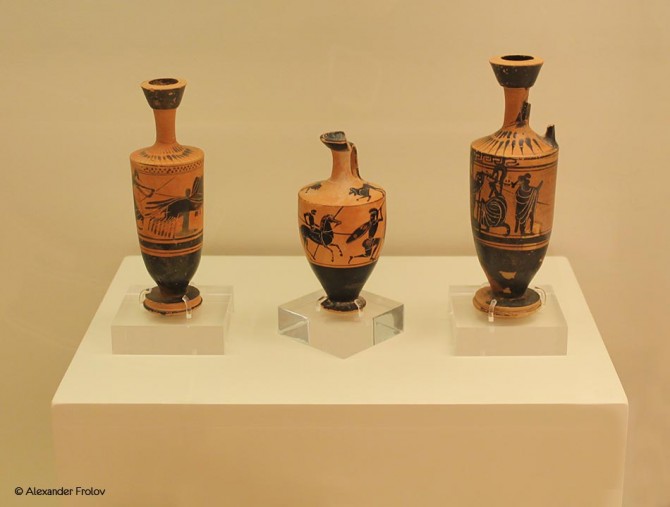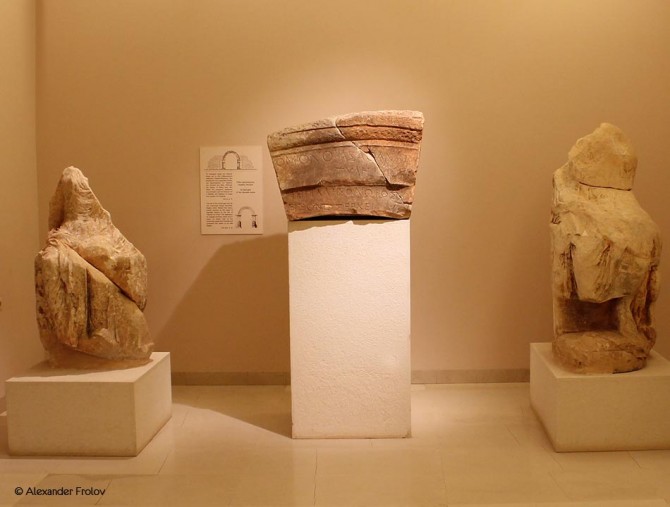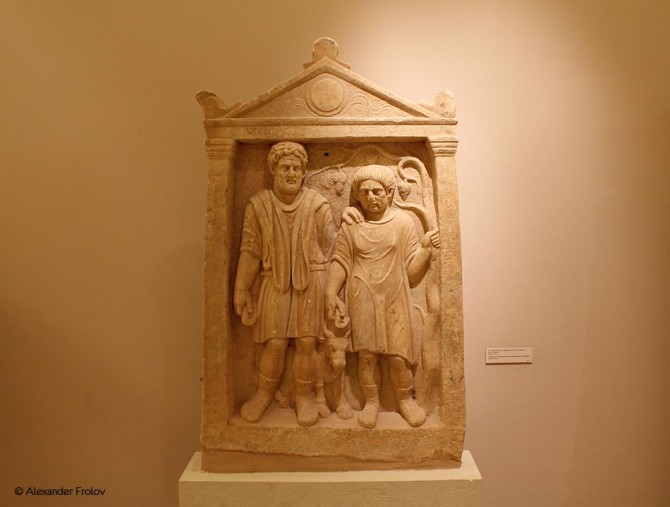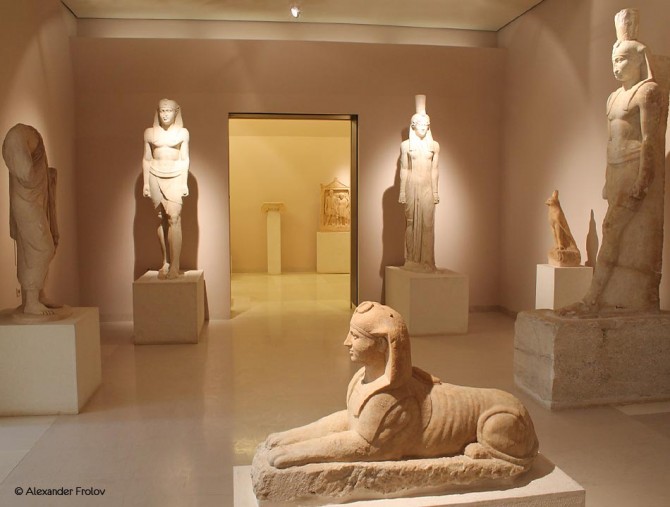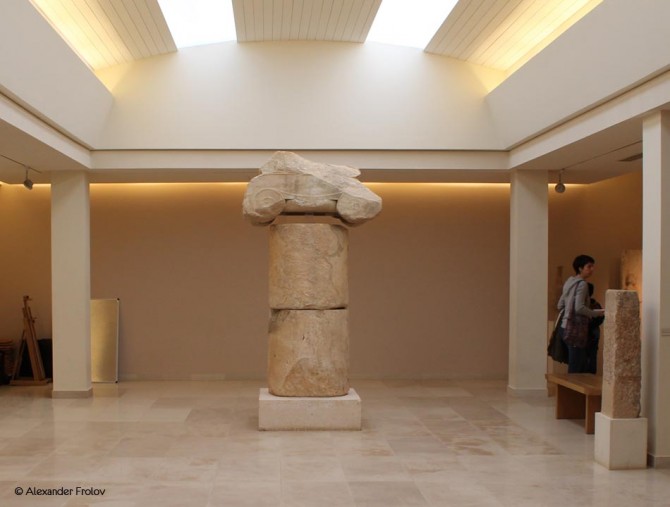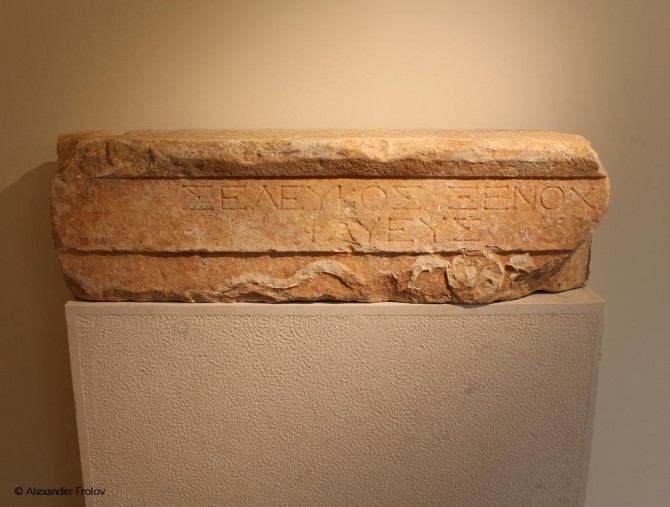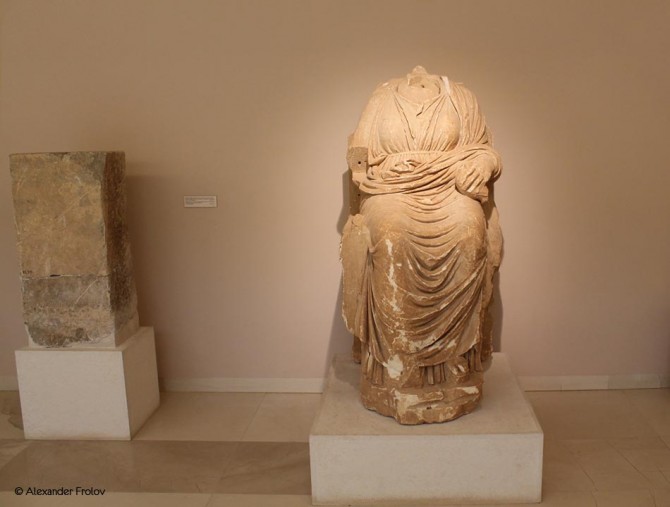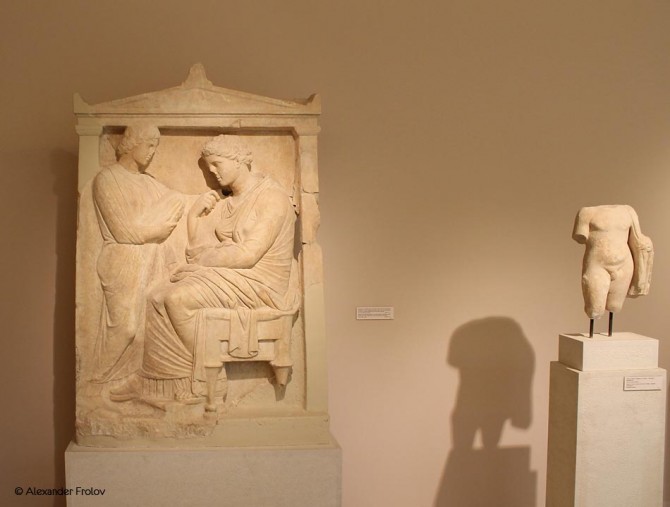Археологический музей в Марафоне
В городе Марафон, где произошло первое из греко-персидских сражений, помимо кургана есть еще и археологический музей. Он находится в районе Врана, в двух шагах от среднеэлладского захоронения. Экспозиция музея располагается в пяти залах и выстроена в хронологической последовательности - начиная эрой неолита и заканчивая поздним римским периодом. В первом зале находятся находки из Пещеры Пана. В античные времена сюда приходили поклониться богу Пану. По свидетельству Геродота, именно это помогло афинянам в знаменательной Битве при Марафоне. Эта пещера также использовалась для жилья начиная с эры неолита (5300-3200 года до н.э.), и заканчивая бронзовым веком (3200-2700 года до н.э.).
Во втором зале представлены находки доисторических времен. Это артефакты с кладбища Тсепи, поселения Бориза (3-4 тысячелетия до н.э.) и с захоронения в Вране (2000-1600 года до н.э.). Тут можно увидеть всевозможные глиняные горшки, кувшины, каменные и бронзовые наконечники стрел, бусы из полудрагоценных камней и многое другое.
В третьем зале представлены артефакты, датируемые раннеисторической эпохой, найденные на кладбищах в этой области. Это глиняные идолы, украшения, деревянные отражатели. Тут можно увидеть мраморные диск, который метали дискоболы тех времен.
Четвертый зал посвящен эпохе Герода Аттика, жившего во II веке нашей эры, возможно самого известного уроженца Марафона.
В пятом зале представлены артефакты с острова Врехиза, что находится неподалеку от Марафона. Тут во времена Ирода Аттического было найдено святилище египтян. Вернее это была полная имитация храма Сарапис, который находится в дельте Нила. В этом зале можно увидеть египетские статуи огромного размера. Например статую Гора, сына Осириса и Исиды. Заканчивается путешествие по музею Марафонским Трофеем. Эта статуя была сделана в честь Победы при Марафоне спустя десять лет после славной победы.
Как добраться до Археологического музея в Марафоне:
- на машине из Афин (43 км) по трассе E75 / Α1
- на автобусе из Афин, отправление со станции на улице Мавроматийон (метро Виктория). Тел. автобусной станции Дикастирия +30 210 88 08 082,
Расписание автобуса: понедельник-суббота: 06:00, 08:15, 12:30, 14:00, 16:30. Воскресенье: с 06:00, 8:15, 12:00, 14:00, 15:30, 17:30. Стоимость билета: 4,70 евро
Археологический музей находится в двух километрах от автобусной станции города Марафон
Фото и текст: Александр Фролов
Archaeological Museum of Marathon
A historical place like Marathon, which is famous for the homonymous epochal battle (490 BC), it is absolutely natural to have its own archaeological museum. The building of the museum is located in Vrana of Marathon, in the same area with the so-called tomb of Plataeans of the 5th century BC and the cemetery of tombs dated in the Middle Bronze Age (2000-1600 BC), which is protected by a shelter. The exhibition is developed in five halls and the covered patio, and includes findings from the Neolithic to the Late Roman period.
Starting your tour from the Hall I, you can see the findings from the “Cave of Pan in Oinoi”, which in classical times was a worshiping place of the god Pan, who, according to Herodotus, was considered that helped the Athenians at the Battle of Marathon. The cave had been also used as a habitation and burial area in the Late and Final Neolithic period (5300-3200 BC) until the beginning of the Early Bronze Age (3200-2700 BC).
The theme of the Hall II is the Prehistoric Times, presenting findings from the cemetery in Tsepi and the settlement in Boriza (Late Neolithic and Early Bronze Age - late 4th and 3rd millennium BC) and from the cemetery in Vrana and the settlement in Plassi (Middle Bronze Age 2000-1600 BC and Late Bronze Age 1600-1100 BC). Among the findings you will see large and small clay pots, bone stone tools, marble figurines, characteristic frying pans with engraved and printed decoration, minyan beetles, bird-shaped jugs, stirrup jars, stone and bronze arrowheads, and beads of semiprecious stones.
The Hall III presents the Historic Times, with findings from the cemeteries of the wider Marathon area, including among others clay pots with geometric decoration, clay idols of enthroned female figures, a wooden reflector and the inscribed marble disc of the discus thrower Dikaios.
The Hall IV is dedicated to Herodes Atticus (2nd c. AD), who derived from Marathon. Among the exhibits, you will see figurative busts of the Roman times, including those of Herodes Atticus and his student Polydefkion, statues of Herodes and his wife Rigillis and the inscription on the solemn reception that the Athenians accorded to Herod after his long absence.
In the marshy island Brexiza of Marathon, a large sanctuary dedicated to the Egyptians deities was founded by Herodes Atticus during the Roman times, which was imitation of the temple of Sarapis in the Nile Delta. The findings of this sanctuary are presented in the Hall V, including Egyptian type statues of supernatural size, a hawk sculpture depicting Horus, son of Osiris and Isis and a sizable clay lamp with the relief of the divine couple Sarapis and Isis.
The tour ends at the Hall of The Trophy, which houses a part of the trophy which the Athenians erected to commemorate their victory over the Persians at the famous battle of Marathon.
Archaeological Museum of Marathon, 114 Plataion Str., Vranas, Marathon, Attica. Visiting hours: Winter: Tuesday to Sunday 8:30-15:00. Summer: Tuesday to Sunday 8:00-15:00. Closed on Monday. Ticket prices: (Full) 3 euros, (reduced) 2 euros. Unified ticket: (Full) 3 euros, (reduced) 2 euros. Valid for the Archaeological Museum of Marathon, the Tumulus of the Marathon Warriors and the archaeological sites of Marathon.
How to get there: By car from Athens (distance 43,7 km) via Α/Δ ΠΑΘΕ/E75/Α1 and Marathonos Avenue. By bus : From Athens to Agia Marina of Marathon, starting point at Mavromataion Str., Pedion tou Areos, Athens, (busline 15, bus stop Dikastiria), tel.: +30 210 88 08 082. Itineraries: Monday-Saturday: 06:00, 08:15, 12:30, 14:00, 16:30. Sunday: 06:00, 08:15, 12:00, 14:00, 15:30, 17:30. Ticket price: 4,70 euros. The journey time is approximately 120 minutes and the bus station in Marathon is 2 km away from the museum.



